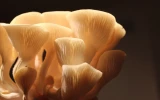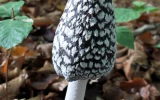Oyster Mushroom Growth Time: How to Speed It Up
The growth time of mushrooms depends on factors such as substrate, species, and air quality. If you’re a beginner in mushroom farming and you’re weighing whether growing oyster mushrooms will save you some time, this article will tell you how long it takes for oyster mushrooms to grow and how you can speed it up.
Oyster mushrooms can grow in as little as 14 days if optimal conditions are met, but the maximum period will be at least 3–8 weeks. You can speed this up by choosing a fast-growing strain, a more suitable substrate, increasing the spawning rate, and growing them in warmer temperatures.
Let's get to know how the factors affect oyster mushrooms’ growth. Keep reading below.
Summary
- Oyster mushrooms can grow in 2 weeks up to 8 weeks and are considered the fastest-growing mushroom type.
- Brown oyster mushrooms grow the fastest, while the slowest grower is the Blue oyster mushroom.
- The growth of oyster mushrooms can be sped up if you choose a fast-growing strain, grow spawns instead of spores, increase the spawn rate, grow them in warmer temperatures, and take note of the right air quality and humidity level.
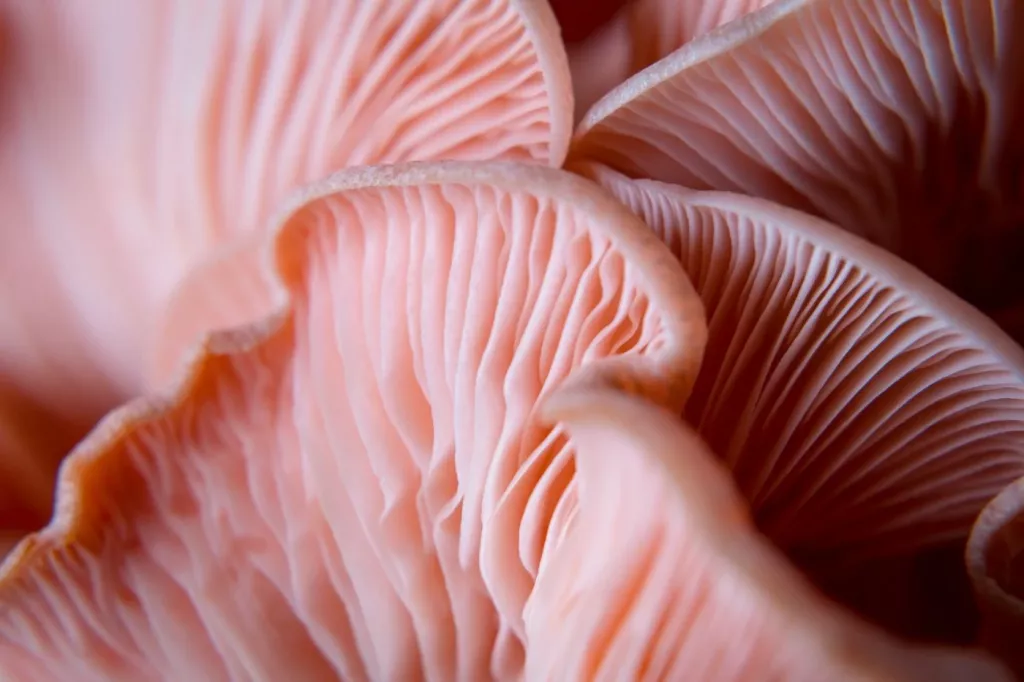
On this page:
Oyster Mushroom Can Grow in 2 to 8 Weeks
While oyster mushrooms are considered one of the easiest mushrooms to grow, it takes a few days or weeks before you can harvest your first produce. All oyster mushrooms go through the same phases when growing. They all undergo spawning, pinning, and fruiting.
If you already purchased your spawn and prepared your substrate, the first step to do is inoculation. This refers to mixing the mushroom spawn with the substrate and then placing it into bags with small holes to allow fresh air exchange.
The bags must be incubated in a warm, dark room to begin the spawning phase. It takes 10-14 days for the mushroom spawn to penetrate the growing medium creating thread-like hairs called mycelium. This process requires a temperature of at least 75°F and a humidity of 90-100%.
When the spawn successfully grows the mycelium, the mycelium will need to undergo “shocking” to induce the next phase, which is called “pinning” or “primordia formation”. Pins are clumps of mycelium that will grow into actual fruit bodies. Pinning takes 7-14 days to complete.
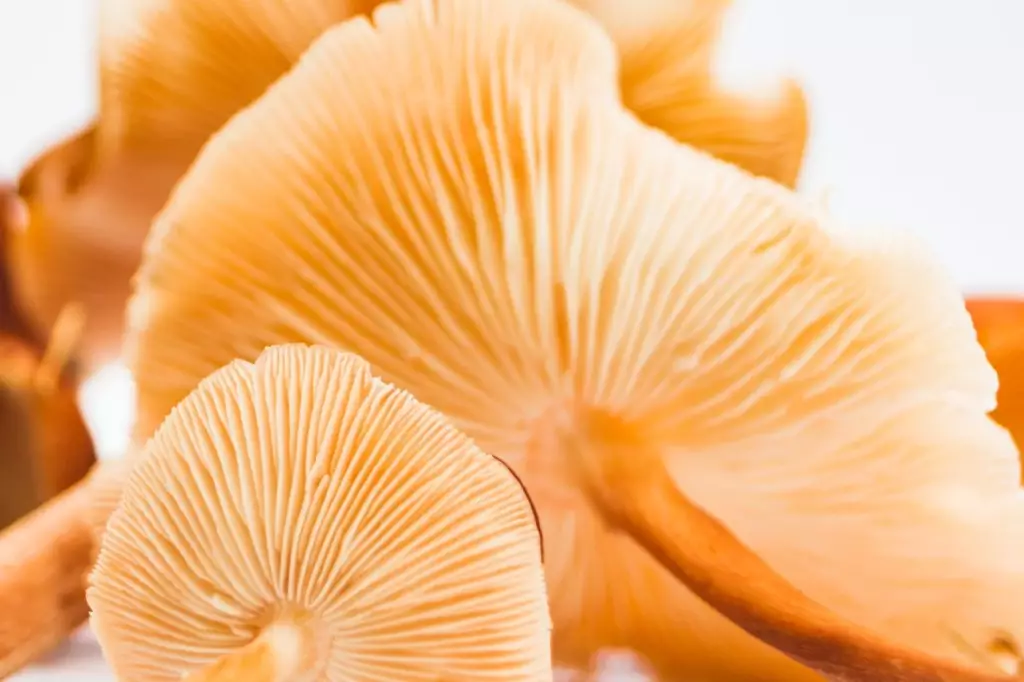
The last stage of growing oyster mushrooms is fruiting. This is when the bags are exposed to high humidity and cooler temperatures to allow the production of delicious and high-quality edible mushrooms. This stage takes at least 5-7 days to complete from tiny pins to full-size mature mushrooms.
Light can also be introduced at this stage to stimulate fruit development, as oyster mushrooms are phototropic organisms. Constant water misting is needed during this stage to prevent the caps from darkening, discoloring, and drying out.
Although oyster mushrooms undergo the same process of growing, they have different growing durations depending on the species. Below is a table showing the period of maturation of a few species of oyster mushroom:
| Oyster Mushroom Type | Indoor Growing Time |
|---|---|
| King Oyster Mushroom (Pleurotus eryngii) | 3-4 weeks |
| Pearl Oyster Mushroom (Pleurotus ostreatus) | 4-5 weeks |
| Blue Oyster Mushroom (Pleurotus ostreatus var. columbinus) | 6-8 weeks |
| Pink Oyster Mushroom (Pleurotus djamor) | 3-4 weeks |
| Brown Oyster Mushroom (Pleurotus ostreatus var.) | 2-3 weeks |
Grow Oyster Mushrooms Fast by Adjusting A Few Factors
If you want to start mushroom farming, the best species to start with are oyster mushrooms. They grow on non-complex substrates and grows fast, that in a year, you can earn more than $100,000 and yield a million pound of oyster mushrooms on an acre of land.
Here are a few prevalent factors affecting the growth time of oyster mushrooms and how you can make each better to speed up their growth in no time.
Choose spawn over spores to grow oyster mushrooms quickly
When choosing which you will start with, spawns are much easier to grow than spores. The advantage of using mushroom spawn is that it grows faster than spores, although the growth duration of your mushrooms from spores or spawn will depend on the type you’re growing.
Aside from this, spawn can be cloned. This means for whichever good quality mushroom there is, you can get the same qualities for your other bags if you know exactly which spawn you used. Spores are genetically distinct, so you’ll get a hard time predicting what qualities of mushroom you will get.
Choose fast-growing strains or species of oyster mushrooms
Another determining factor when it comes to the growth of mushrooms is what species they belong to. The species of mushrooms determines how quickly it grows. On top of this, a single species of mushroom can have different strain variations.
The pearl oyster mushroom (Pleurotus ostreatus) can grow in 4-5 weeks. Variants of this species, like the Brown Oyster mushroom (Pleurotus ostreatus var.) mature quickly within 2-3 weeks, while the Blue Oyster Mushroom (Pleurotus ostreatus var. columbinus) needs at least 6-8 weeks to grow.
So, if you want a fast-growing oyster mushroom, opt for the brown-colored variants.
Go for warmer temperatures to grow your oyster mushrooms quicker
Different species of mushrooms have different preferences in temperatures where they will grow best in. Mushrooms will grow faster in warmer temperatures. Oyster mushrooms grow well in the temperature range of 50°F to 75°F or 10°C to 24°C.
Increase the spawn rate to get your oyster mushrooms to colonize rapidly
Spawn rate refers to the ratio of the amount of mushroom spawn versus the amount of your substrate. A bag usually has 10% mushrooms spawn to 90% substrate. If you increase your spawn rate to 20% spawn and 80% substrate, your bags will colonize more quickly. The higher the spawn rate, the quicker the mushrooms grow.
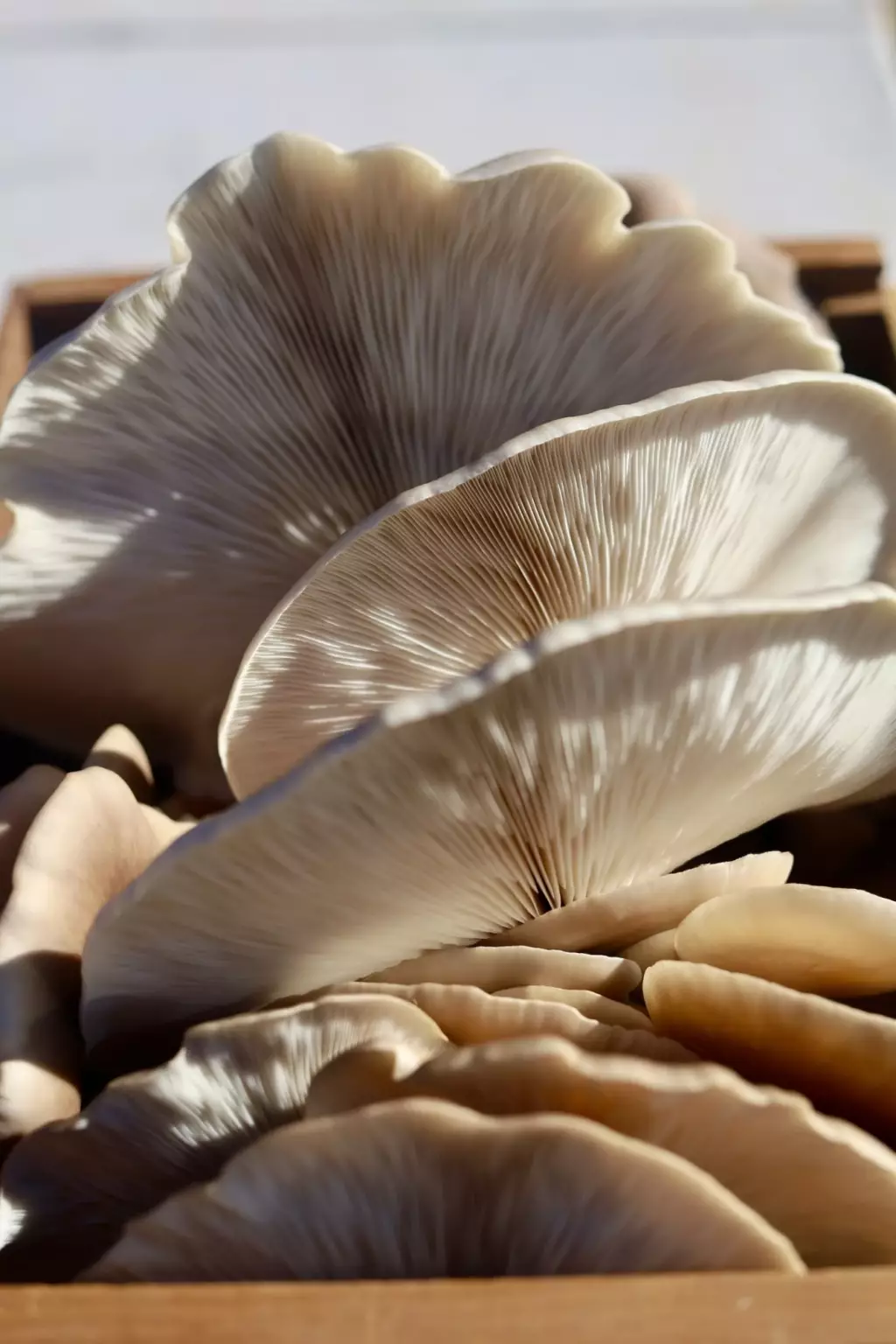
Pick the most suitable substrate or growing medium for the mushroom
The substrate used will define how fast your oyster mushrooms will grow. Some substrates are preferred by oyster mushrooms because they are more nutritious and easier to digest.
Although you can grow mushrooms on logs, sawdust, wood chips, or wood pellets, a substrate like straw can help your oyster mushrooms grow faster. The particle size and structure of straw allow the mycelium to spread very quickly.
Balance the right percentage of humidity to speed up mushroom growth
Mushrooms need a humid environment in each stage of their growth. During pinning, the humidity level must be increased to at least 95% to induce the formation of pins.
High humidity helps your mushrooms to grow faster and produce better quality. But still, close monitoring must be done. Too much humidity may induce the growth of bacteria and molds, and less of it will cause your mushrooms to abort fruiting.
Provide good ventilation to let oyster mushrooms flourish
Carbon dioxide (CO2) levels also affect mushroom growth. As your oyster mushrooms release CO2 when they grow, excess of this air must be removed, or it can hamper the growth of your mushrooms.
Intense monitoring of CO2 levels must be done during the pinning stage. At least 1200-1500 ppm of CO2 can be maintained in each bag for proper fruit body development. Anything more than this range can slow down the growth of your mushrooms or cause deformation.
Know how much light the mushroom needs in each growth stage
No light is required during spawning. In fact, your mushrooms colonize faster if kept in darkness. However, during the pinning and fruiting stage, partial light must be allowed.
Mushrooms like light during fruiting. Light signals the growth of fruiting bodies. Oyster mushrooms grow best when exposed to low light levels like how much light they receive when growing on a shady forest floor.

